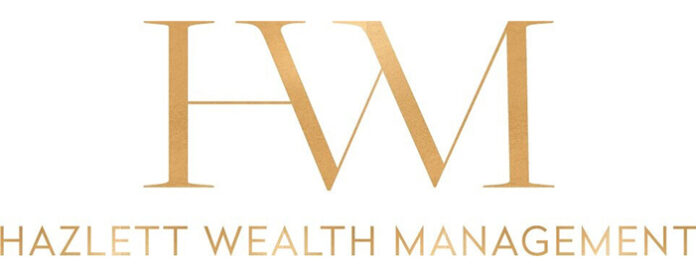BY SUZANNE HAZLETT, MBA®, CIMA®, CFP®

The Federal Reserve raises interest rates or tightens the monetary policy to slow down overheated economic growth. Increasing interest rates elevates the cost of borrowing and effectively reduces its attractiveness.
Within the public equity market, there are 11 sectors or investment subsets. Financial analysts and economists use these sectors to classify economic activity by grouping companies engaged in similar business activities. Following past rate hikes, equity sector performance varied, but there were constants. For example, most sectors were positive one and two years out from the first rate increase. The Technology, Energy, and Industrials sectors outperformed, on average, one year later from the time rates began to rise. Communications, Consumer Discretionary, and Consumer Staples have been the worst performing sectors in the same period.
Many believe that financial stocks always perform well during increasing rate cycles because banks benefit from higher rates. Even so, historically, other sectors have tended to outperform.
Looking beyond sectors to company size or market cap and style as determinants of potential performance—small-cap companies and growth stocks, in general, have experienced the highest return one year following the first rate increase. In comparison, value stocks trailed the broad market and growth stocks.
History teaches us that stocks generally continue to perform well two years out from the first rate increase, though shifts in sector leadership are expected to occur over the cycle. When the Fed starts raising rates, the markets have proven to be hospitable for equity investors for the next 12–24 months before economic conditions begin to slow enough to increase the probability of a recession.
KEY TAKEAWAYS:
There have been several rate hike cycles in the U.S. in the last 40 years.
- A different set of economic circumstances drove each rate hike cycle.
- In most cases, equity markets tended to have positive returns one and two years out from the first rate hike.
- Historically, Technology, Energy, and Industrials tended to have the highest returns compared to Communications, Consumer Discretionary, and Consumer Staples.
- Investors in the stock market should be confident that markets don’t fall apart just because of increasing interest rates.
HAZLETT WEALTH MANAGEMENT, LLC is independent of Raymond James and is not a registered broker/dealer. Investment advisory services are offered through Raymond James Financial Services Advisors, Inc. Securities are offered through Raymond James Financial Services, Inc., member FINRA/SIPC. All investing involves risk, including the possible loss of the principal amount invested. No investing strategy can guarantee that your objectives will be met. Additional risks are associated with investing in an individual equity sector, including limited diversification. Past performance is no guarantee of future results. HAZLETT WEALTH MANAGEMENT, LLC is located at 675 Sun Valley Road, Suite J1 + J2 Ketchum, Idaho 83340 208.726.0605. HazlettWealthManagement.com



